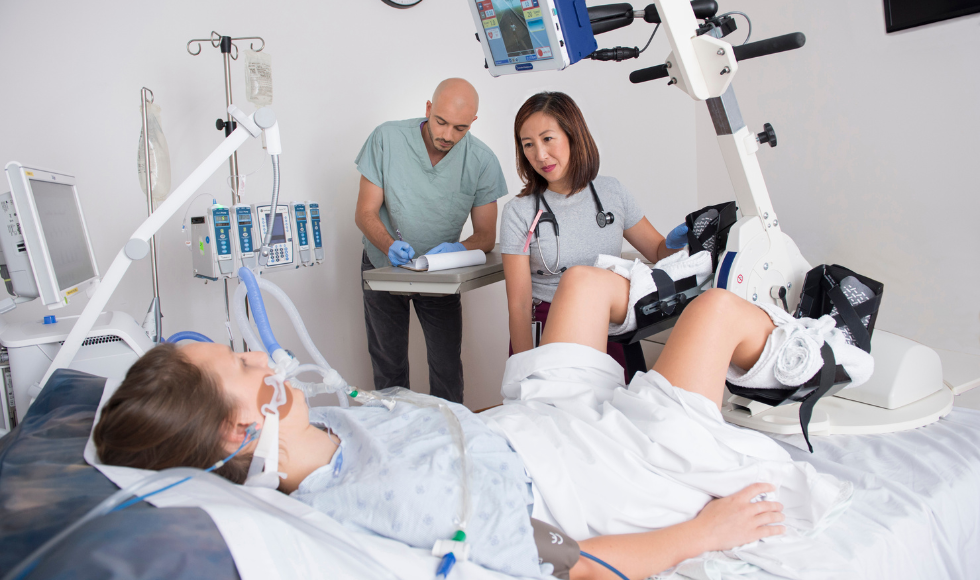Cycling for critically ill patients improves physical function, reduces hospital stays: systematic review

October 18, 2024
A new systematic review led by researchers in Hamilton, Canada has shown that specialized in-bed cycling therapy, when used in the intensive care unit with critically ill patients, leads to better physical function and a one-day shorter length of stay in the ICU.
The review showed on average, patients who cycled spent one day less in the ICU compared to those who didn’t, and 1.5 days less in the hospital overall, freeing up an important bed sooner. In Canada, the average costs per patient can be up to $7,300 per ICU day and $1,500 per hospital day.
Traditionally, ICU rehabilitation studies have been inconclusive or lacked clear results. With this systematic review, a clearer picture is emerging around the safety and benefits of cycling as a rehabilitation intervention in the ICU.
The research — published in NEJM Evidence and simultaneously announced at the European Society of Intensive Care Medicine Congress in Spain — was led by researchers with McMaster University’s School of Rehabilitation Science and St. Joseph’s Healthcare Hamilton. The review analyzed data from 33 rehabilitation clinical trials in 13 countries and included nearly 3,300 patients.
“This research is a major win for patients and their families,” said Heather O’Grady, lead author and recent PhD graduate from Rehabilitation Science at McMaster. “This analysis shows that cycling as part of rehabilitation in the ICU can decrease ICU and overall hospital length of stay, is safe and perhaps most importantly for patients, leads to better physical function post-ICU discharge.”
The review builds off previous research conducted by senior author Michelle Kho, a professor with McMaster’s School of Rehabilitation Science, that first highlighted the potential benefits of cycling by patients in the ICU.
In addition to the main findings, the review showed that adverse events during cycling are uncommon, occurring in less than one per cent of patients. Importantly, patients who received cycling in the ICU did not have higher mortality than those in the comparison groups.
The researchers say the findings provide a distinct research pathway for future study because the model of rehabilitation uses clear-cut equipment, is reproducible and easily standardized.
Heather O’Grady received partial salary support from the CIHR-funded Accelerating Clinical Trials Consortium.


